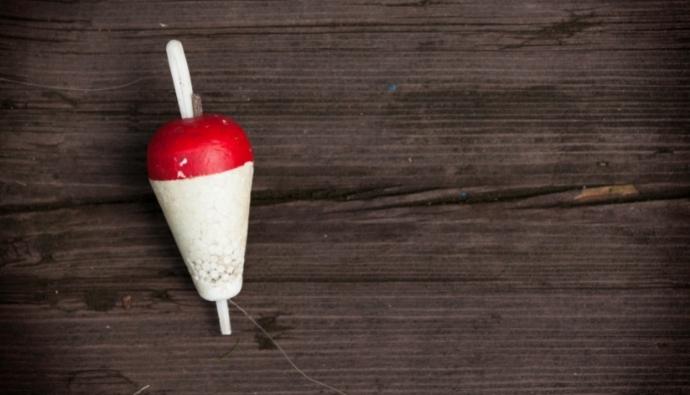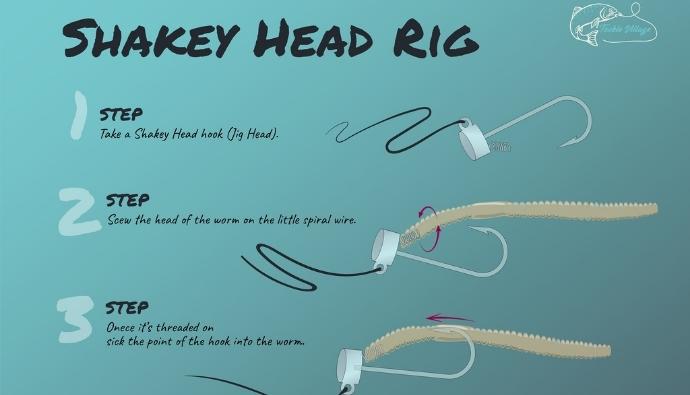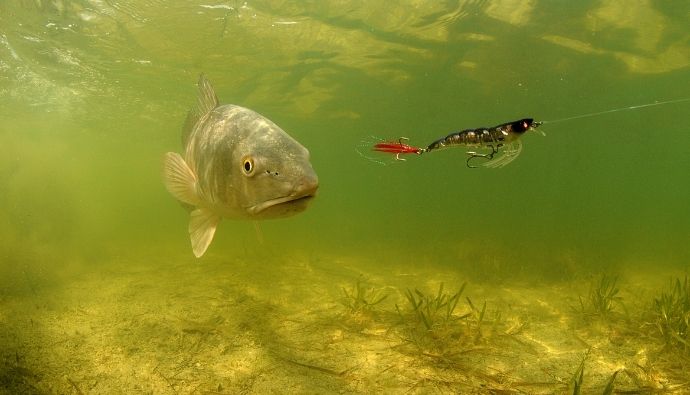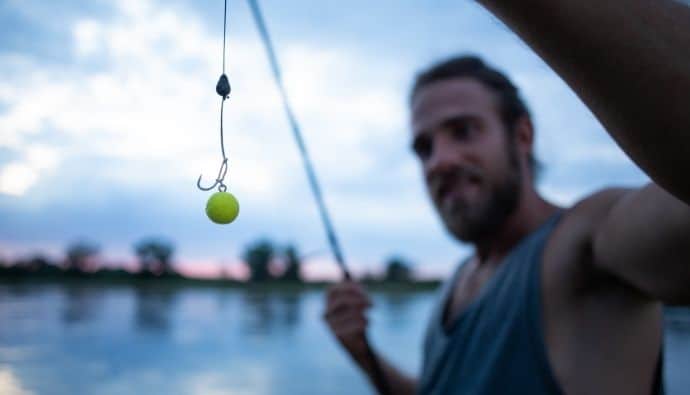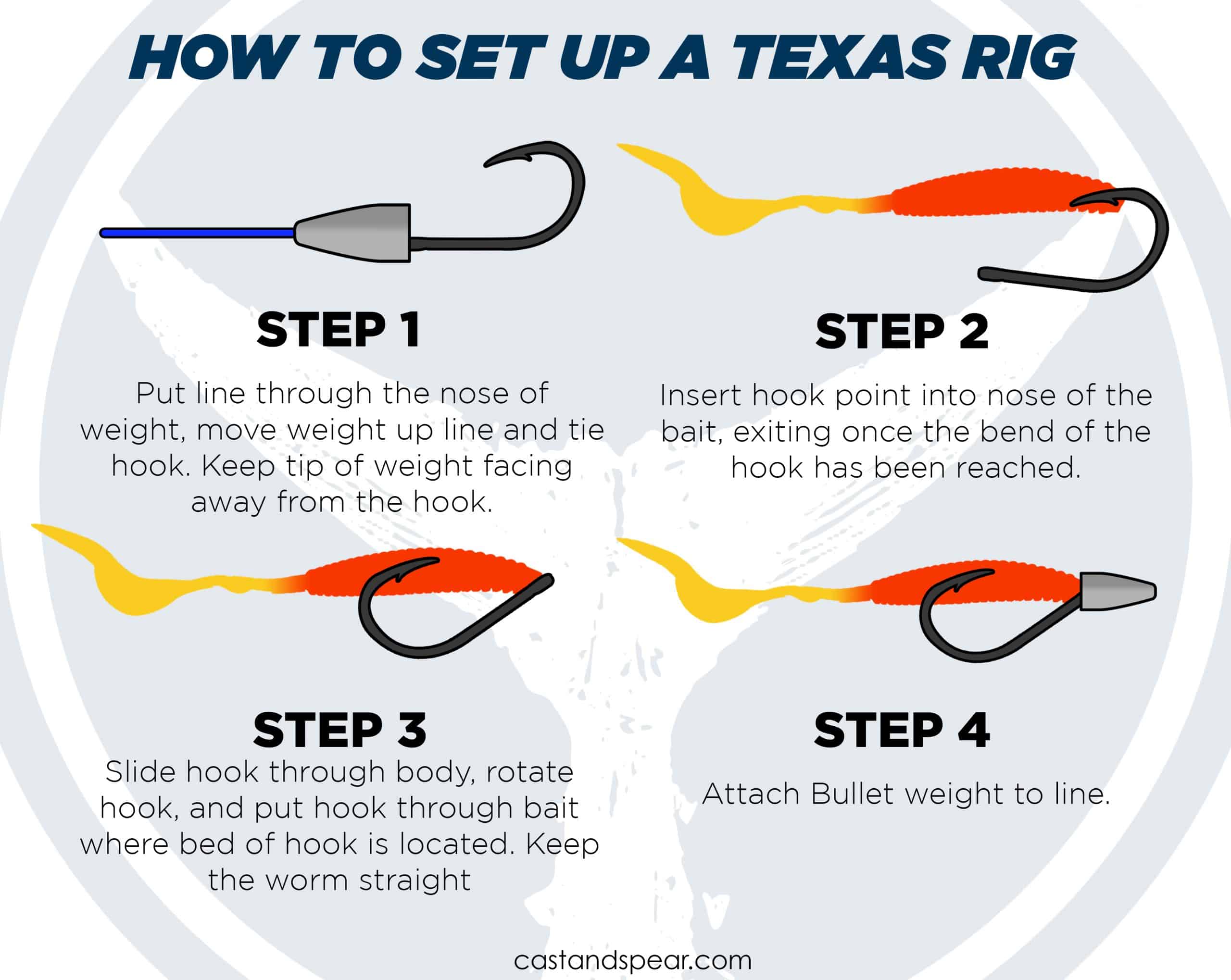Rigging for wahoo requires using the three-wire stand, three hooks, and about six haywire twists. To make a rig, you need at least 4 feet of number nine wire and a haywire twist of about 7/0 hook to one end. Next, twist the strands of the wire on the connecting loop. Remember, the twist depends on the baitfish size you’re using. Then connect the leader lines and the number 9 wire to each eye of the hooks. Once done, add the smaller hooks to the transfer wire. Ensure they’re about halfway down the baitfish’s body, and the threading wire passes through the copper wire.
Wahoos are among the sea’s high-speed fish, and knowing how to rig for them is crucial. Here is a guide that will help you understand how to rig for wahoo and the tips and techniques you can follow to make it easier for you to get a catch.
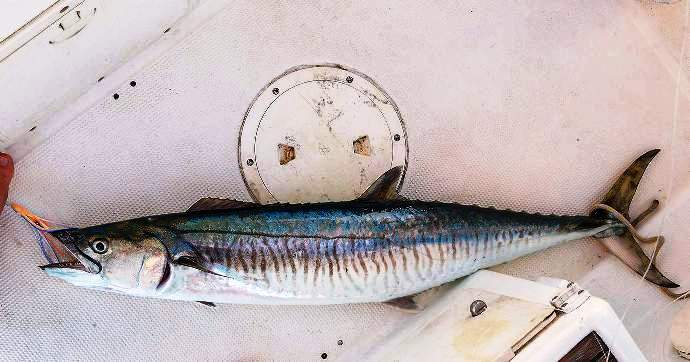
Wahoo Lures
The subsequent are a few of the best lures for high-speed trolling for wahoo:
1. Yo-Zuri Bonita Wahoo Lures
[amazon box =”B014UX7KOG”]
The Yo-Zuri’s Bonita wahoo lures, a high-speed wahoo trolling hard bait, feature a smooth scale side pattern and color-changing technology on the top. It also has a streamlined body and stainless steel, flat fishing hooks, and a steel ball bearing that feature swivels.
Known to be one of the sturdiest trolling lures in the market, the Bonita is quite versatile in usage. You can fish the lure either right behind trolling leads or from the rod tip. Plus, it can withstand a speed of 6 to 15 knots due to its tight swimming action, which prevents damaging it.
Ideal for large and aggressive fish such as wahoo, swordfish, and tuna, the Bonita lure should be part of your trolling rigs. It comes in several color patterns so you can purchase ones that can suit your accustomed fishing conditions.
2. Blue Water Candy Jag-A-Hoo Wahoo Lures
The Blue Water Candy Jag-A-Hoo wahoo trolling lures should be a part of your rig if you are wahoo fishing.
Inspired by the ‘wahoo bombs’ of the West Coast, it features a swivel that mounts to a hook that allows a blade to rotate right behind the bait. This adds vibration and flash, which deep water fish, such as wahoo, cannot resist.
Jag-A-Hoos make use of the original head of the Blue Water Candy Jag wahoo lures, which have been used by anglers for years to target this speedy fish. The skirt has been shortened in this variety to align with the hook’s bend so that the spinning blade remains clean.
Jack-A-Hoos wahoo lures design can withstand the hard mouth of aggressive wahoos. A single lure is rigged on a 275 lb cable and features a 900 lb solid ring and an 8/0 Mustad hook.
Instead of skirts made of hair, this lure has a flashy material as a dressing or Mylar. It is strong enough to withstand multiple fish strikes and flashy enough to make them keep trying.
The wahoo trolling lures can be used to attract wahoo swimming at over 12 to 15 knots. A fixed crimp right on the leader in front of the lure heads also increases casting distance.
The Gagliardini Grabber Wahoo Rig
Creating rigs for wahoo is a hotly contested topic, especially for tournaments. Renowned Florida Keys guide, Capt. Jimmy Gagliardini is an expert in offshore, wreck, and reef fishing. However, his claim to fame is due to his big-game fishing skills, which involve wahoo.
The veteran angler has perfected a rig with a highly successful catch rate for this speedy fish, whether it misses the hooks or tries to shake itself off. Known as the Gagliardini Grabber, the trolling rig is boat-friendly. It can be for small to mid-sized boats and is suitable for traditional trolling speeds.
Rigging Technique
- This wahoo rig requires three hooks, three-wire strands, and at least six haywire twists. Make sure you have plenty for a full day of fishing.
- To make the rig, first cut 4 feet of No.9 wire and haywire twist a 7/0 hook to one end. One O-Shaughnessy hook will do. Leave it at one end as well as a few inches of the tag end upright to the hook point to create a pin rig.
- Then, twist a strand of the copper wire onto the connecting loop. Based on the size of the baitfish you are using (preferably ballyhoo fish), cut leader lines about 4 to 5 inches long from the no. 9 wire and connect each to the hook eye of the lead hook with a haywire twist.
- Take the smaller hooks and add them to the stinger wire, making sure they are about halfway down the baitfish’s body. Secure the set with a haywire twist while making sure that the hook point in an outward direction.
This rig offers a unique advantage in the form of two separate stinger strands that swing freely along the baitfish body you use. Wahoo is notorious for throwing hooks off using aggressive headshakes. When it does this, at least one of those hooks will dig in deep and stay there no matter how hard the fish struggles.
Just make sure you are careful. Those razor sharp teeth and hooks can do a lot of damage if you don’t keep an eye on them.
Bait Setup
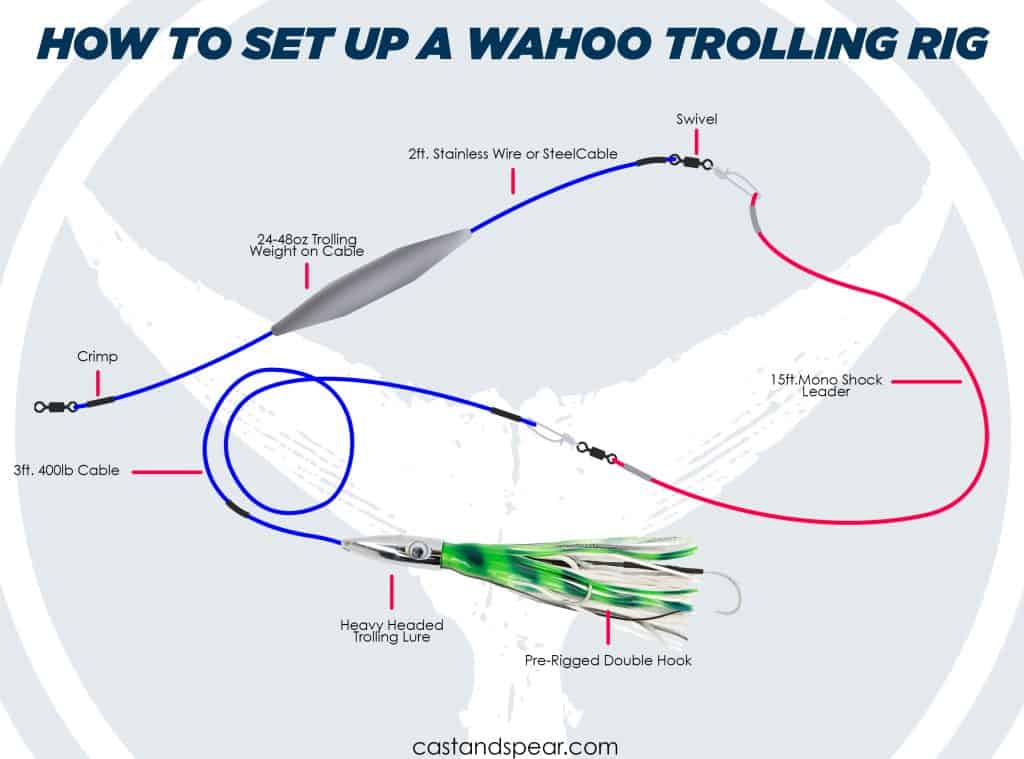
Wahoo typically strikes the back half of the bait. With this special rig, those strikes can turn into successful hookups.
To make this setup, hold the stinger strands off to the small baitfish’s side and insert the lead hook into the throat. Then, work the bait onto the shank and pull out the point through the bait’s belly.
Then pass the wire leader’s tag end through the baitfish’s lower jaw and out through its upper jaw. Secure the bait by threading the copper wire through the eye socket and make several wraps right behind the pin and then around the jaws in front of it. Make a few more wraps around the wire leader.
After that, slide the lure on the leader. Use a small haywire twist to make a loop at its end for the snap swivel. To prevent the lure from tangling, trim the skirt in front of the stinger hook, and you are done.
Tips and Techniques on Wahoo Fishing
Follow these tips to increase your possibility of catching big wahoo:
High-Speed Wahoo Trolling Tips
- Trolling speed is key whether you have a 4 or 6 lure spread for wahoo. Ideally, you should be going at 12 to 14 knots to troll or 18 knots if you are using certain lures.
- Wahoo feeds in packs, so if you find one, chances are there are more around after you reel in your first one, circle back to the same spot at least two more times to attract more.
- Crew members should be prepared to release the drag on the lure that was not hit once a wahoo bites the line. They should release at least 50 feet of the fishing line out to increase your chances of triggering a second strike.
- Tell the captain to continue running the boat at the same speed for at least 10 seconds more when the reel starts screaming as the wahoo pulls the line. This increases your chances of getting a double or triple header. Once time’s up, slow down the boat until it goes no slower than seven mph.
- Turn the boat offshore once it starts to slow down to drag the hooked wahoo into deeper water as you reel. It will discourage sharks from trying to steal it.
- Do not slip the rod out of the holder after the reel starts screaming. You may go overboard or lose your rod if you try to reel in a powerful wahoo while standing. Leave it in the holder and start reeling to prevent the line from going slack.
- Keep small or large wahoo lures in your tackle box that are of varying colors. You should base your chosen colors on the clarity of the water you will be trolling in as well as the type of baitfish you find. Use lures dark in color (such as black, red, and purple) when the water and sky are clear.
- If you are fishing at night and the moon is, but the water is murky, use light-colored wahoo lures such as blue, pink, or white. This piece of information can serve you well when you are unsure which lures you should use.
- Target wahoo during the first few and last few hours of the incoming and outgoing tides. The first few hours after sunrise is crucial in catching big wahoo. Pay special attention to the current direction and figure out how fast you can troll. Since wahoo prefers to feed in the dark or in low light conditions, head to the water as early as possible.
- Use a Bimini offshore swivel knot to connect your main line to the swivel. The main lines are the weakest link during high-speed trolling, and a knot that is not tied well enough can break off easily. This swivel knot will not.
- Cut up natural bait as chum to lure wahoo. These can be any baitfish you find, such as herring, pilchard, etc. Large chunks typically attract fish, so you can be generous. Redtail scad cut crosswise can prove irresistible to wahoo since these look like they are bitten in half. Throw a couple in the water and then the hooked bait to increase your chances of hookups. Keep plenty on hand, though.
- Boating a wahoo is a three-person job. As the angler, your job is to hook the fish and hold its weight on the leader. Another person should wire it while a third should gaff it. Only after that should you start to reel it in and prepare yourself for a long fight.
- While trolling, ensure there is just enough drag on the reel to prevent the baits from pulling it.
- Steep drop-offs are the ideal places to troll for wahoo. Target areas that have floating debris that attract baitfish up to the surface. To detect these, keep a lookout for diving seagulls or other seabirds on the surface of the water. A larger fish may have pushed them up to the surface.
- You can find wahoos near a school of mahis so that you can drop the jig there to about 50 to 60 feet.
Frequently Asked Questions
The type and color of the lure should depend on the clarity of the water you are fishing in as well as the speed of the current. Try the Yo-Zuri Bonita Wahoo Lure.
An extra strong, 2/0 short shank treble hook is considered to be sturdy and sharp enough to hook the hard jaws of a struggling wahoo.
Anywhere from 10 to 15 knots should do.
With speeds that clock in at 60 mph, your reel will literally start ‘screaming’ once you hook a wahoo. The powerful fish can be naturally difficult to catch if you don’t have the appropriate equipment or strength to withstand the struggle.
You can find wahoo in the waters around Northeast Florida and off the coast of Louisiana. These are warm enough for the fish to thrive. You may even find some decent-sized yellowfin tuna and kingfish in those areas, which you can catch by baiting with cutlassfish.
Yes and no. Fish is a healthy source of lean protein and is exceptionally rich in saturated fat and sodium. It also comes with a lot of vitamins B6, B12, selenium, and phosphorus. A 4-ounce serving has about 375 mg of omega-3. However, since it’s a bigger fish, it will have a higher accumulation of mercury and other toxins.




 Facebook
Facebook YouTube
YouTube